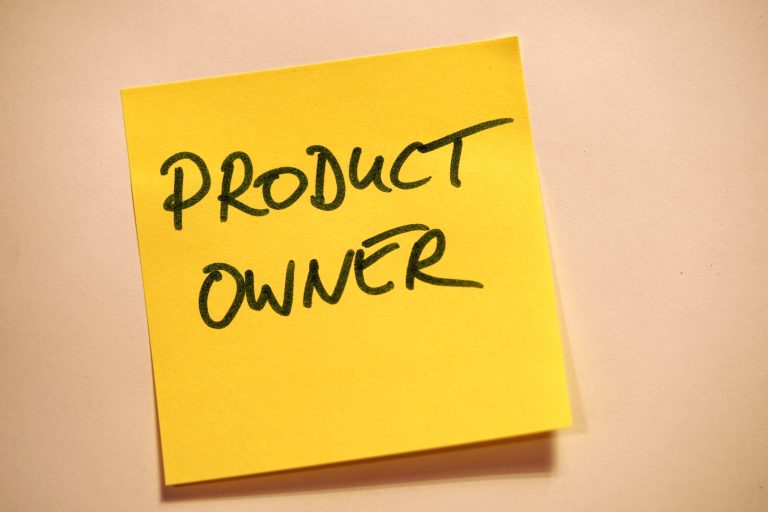The mid-90’s era saw an eruption of methodology which intended to transform all sort of development processes. Its primary goal is to improve collaboration amongst different teams, improve communication, and subsequently resulting in customer-oriented as well as high-quality products. This innovative development model is known as Agile Development/ Agility. Its most important aspect is that it is equally relevant to all sorts of software as well as hardware related ventures. Agile development involves short development iterative approach to solve the existing development problems. It includes cross-functional and self-organized teams to establish better collaboration and communication. Furthermore, it involves frequent and high-end customer feedback to design and manufacture customer-oriented products.
Agile development is an ingredient for continuous success and business growth. Typically, agile methodology involves a development framework, known as scrum. Its purpose is to emulate a daily communication plan along with the flexible plan reassessment, thus accumulating to the iterative development cycles. Agile methodologies also include a framework promising extreme programming, which ultimately results in quality software, and these methodologies also centered around the feature-driven development agenda.
Talking of the automotive industry, agile development is quite applicable. The automotive industry has always been a center of innovation, and it is one of those sectors whose growth depends largely on innovation and quality. Thus, it won’t be wrong to place the automotive industry in the ideal prospecting sector for agile development.
Agile Development and the Automotive Sector
After being ascertained about the relevance of agile development in the automotive sector, it is imperative to look for possible avenues. For a beginner start, it is enough to relate it with the technological war going on between the European automobile sector and the American automobile sector. This competition is forcing European automobile giants such as BMW and Volkswagen to compete with their American counterparts, such as Tesla and Ford. While this competition is quite healthy from the customer perspective, there is a need to look for agile development to translate these benefits to the manufacturers. Following are some of the avenues where agile development can be foreseen to play its part in the automotive sector:
Digital Clones
With the more inclusion of agile models and prototyping, the automotive industry can greatly reduce the development cycles. Digital cloning is one way of doing this. With this, automotive manufacturers can test their designed models in the virtual world. Not only will they be able to assess the performance or quality of their design, but they will also be able to expedite their designing, testing, and approval cycles.
Clean Sheet Design
A clean-sheet design methodology is being widely used in the aerospace industry. In this model, aerospace companies employ agility-oriented design techniques to complete different projects. Thereby employing teams, and in some cases, they even involve suppliers to integrate their tools and expertise in reinventing plane elements. By implementing it in the automotive industry, companies can have a better insight into their product and what changes are needed to be done.
Integration of Virtual and Physical World
Since agile development methodology is aimed to reduce the development cycles and production cost, the automotive industry has a great platform to accommodate this. With the integration of the virtual and physical world, automotive companies will be able to better understand the performance constraints of their product. Thereby reducing the fabrication cost as well as a possible timeline extension.
Challenging Differences for Agile Development between Vehicle and Software
It is quite a well-versed understanding that the automotive industry is quite relevant for the implementation of agile development methodology. However, like any other technology, agile implementation is also facing challenges both from hardware as well as software perspective. Following are some of those challenging differences:
Long Lead Times
Agile practices are mainly implemented in the research & development section of any automotive industry. According to one of many conducted studies, it usually takes six years for agile development to get mature in the automotive sector. On the contrary, it takes only six months for the agile process to reach maturity in the software companies. The reason for such a long lead time lies in the different application areas. Where agile implantation in the automotive industry is more concerned with the hardware aspect, the software company’s implementation is quite a digital one. Therefore, giving software houses more edge in saving cost and thereby enhancing productivity.
Company Internal Process
Apart from the fact that developing protocols for new electronic devices or software components are almost the same for automotive companies, but individual company internal processes are quite different. This is the reason that the same agile techniques cannot be applied to every automotive company. Therefore, to confront this challenge, it is imperative to brainstorm and write a transformation strategy beforehand.
In addition to this, there is another challenge that is related to organizational culture. It is noted that the majority of people in the automotive sector tend to work in the same company for decades. This thing makes them inadaptable to the changes, and therefore, they are not ready to change their working style. Consequently, it poses a challenge for the companies to apply agile development methods, and desired results cannot be obtained.
Complex Prototyping
Since agile development calls for prototyping prior to mass production, 3D printing can prove to help fulfill this need. But, in actuality, things are not as straight as they seem. These concerns amount to the complexity of the prototype production, thereby making it costly and time-consuming. Therefore, working with vehicles (hardware) cannot be made as flexible as working with the software. Because, while working on software development, if any error occurs, it can be fixed by changing various coding scripts. But when it comes to hardware, a person has to disassemble, fix things and then get it assembled again. In case the problem persists, the same process has to be repeated. This challenge poses a threat to the efficiency of the agile development process.
Supply Line’s Synchronization
Despite the fact that the automotive company is fully equipped with the agile methods, if the supply line isn’t synchronized, then such implementation won’t be of any use. Hence, if a supplier isn’t equipped with the agile principles, then the company won’t be able to supply the products within due deadlines. Thereby forcing companies to lose benefits of the agile development process.
Information Sharing Culture
In the automotive sector, the chain of communication is quite long. It is so because there is a proper yet long channel for any information to proceed. Usually, the process is so long that it usually passes through multiple channels until the required information reaches the concerned person. For example, if some authority wants clarification on certain requirements, then that required information will first go to the responsible software, after that to the architects, and then to the electrical department, and the process goes on until it reaches the concerned person. This consequently results in low developmental continuity. Thus, resulting in the late arrival of the information with a possibility that information might reach so late that the concerned person may engage in some other task.

Conclusion
Since the automotive industry involves sophisticated processes, maintaining high-end quality is a serious concern. It is a well-perceived idea that future preferences will center upon cost and quality. Since the main goal of agile development is to improve collaboration, enhance productivity, and optimize the process, therefore, it can prove to be significantly beneficial for the automotive sector.
Apart from fully realizing its benefits, there are multiple challenges too. If ignored, these challenges can hinder the effectiveness of agile processes, and thus everything can go in vain. In a nutshell, coping up with the above-mentioned challenges is the only way forward to take on the fruitfulness of the agile methods. As it is noted, agile implementation on the organizational level isn’t enough, digitalization and agile transformation go hand-in-hand. The combination of both is the key for future survival of the automotive industry.
Concerning this, Mario is a coach and an expert in agile implementation and digitalization strategies with vast knowledge in business out there to help businesses and companies avert or recuperate from a fall. Get in touch or reach out to Mario via his website: http://www.the-innovation-speaker.com/



